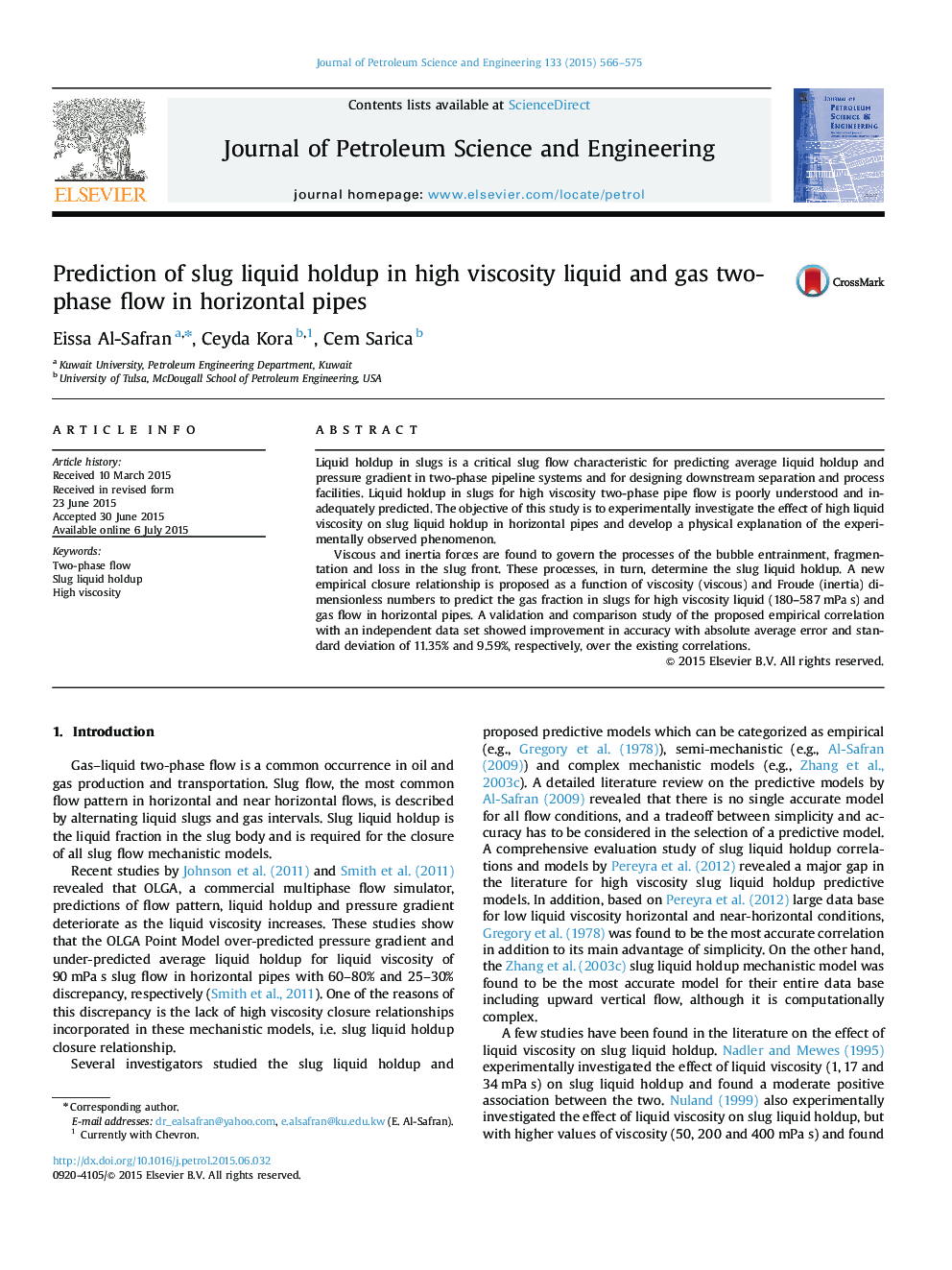| Article ID | Journal | Published Year | Pages | File Type |
|---|---|---|---|---|
| 1754747 | Journal of Petroleum Science and Engineering | 2015 | 10 Pages |
•HLLS and slug aeration onset velocity increases as the liquid viscosity increases.•Low turbulence intensity at slug front result in large entrained bubbles.•Thick film in the film region results in decrease in the gas entrainment rate.•A new simple high viscosity empirical slug liquid holdup correlation is proposed.•The validation study shows high accuracy of the new correlations.
Liquid holdup in slugs is a critical slug flow characteristic for predicting average liquid holdup and pressure gradient in two-phase pipeline systems and for designing downstream separation and process facilities. Liquid holdup in slugs for high viscosity two-phase pipe flow is poorly understood and inadequately predicted. The objective of this study is to experimentally investigate the effect of high liquid viscosity on slug liquid holdup in horizontal pipes and develop a physical explanation of the experimentally observed phenomenon.Viscous and inertia forces are found to govern the processes of the bubble entrainment, fragmentation and loss in the slug front. These processes, in turn, determine the slug liquid holdup. A new empirical closure relationship is proposed as a function of viscosity (viscous) and Froude (inertia) dimensionless numbers to predict the gas fraction in slugs for high viscosity liquid (180–587 mPa s) and gas flow in horizontal pipes. A validation and comparison study of the proposed empirical correlation with an independent data set showed improvement in accuracy with absolute average error and standard deviation of 11.35% and 9.59%, respectively, over the existing correlations.
